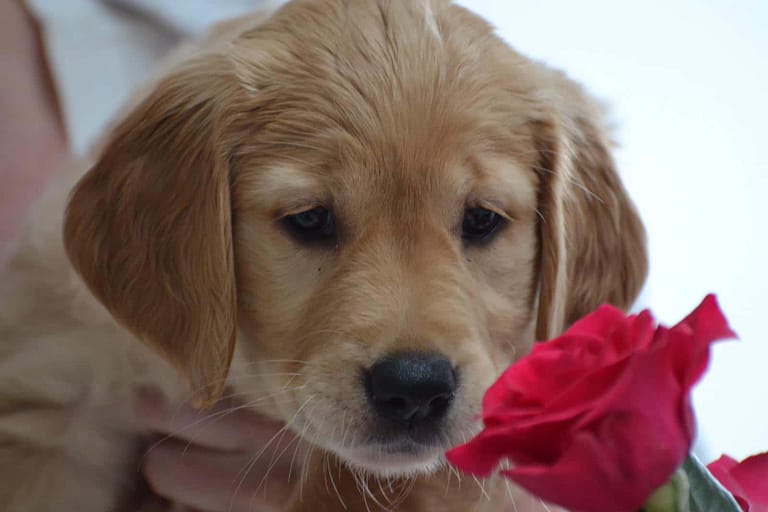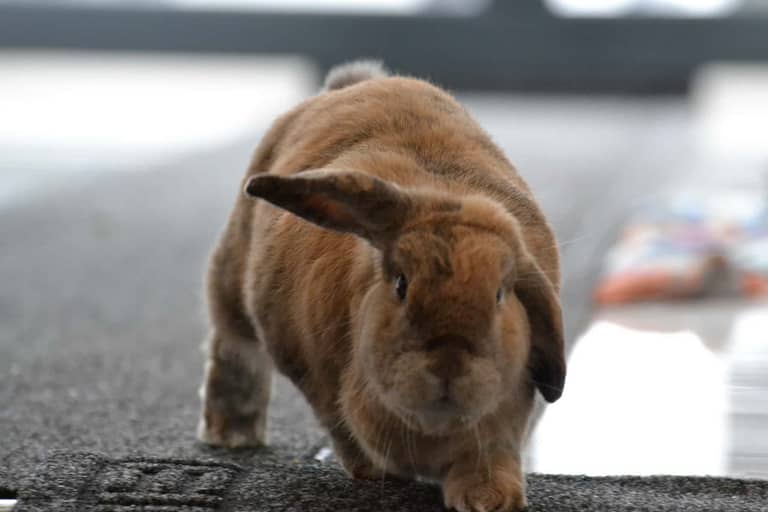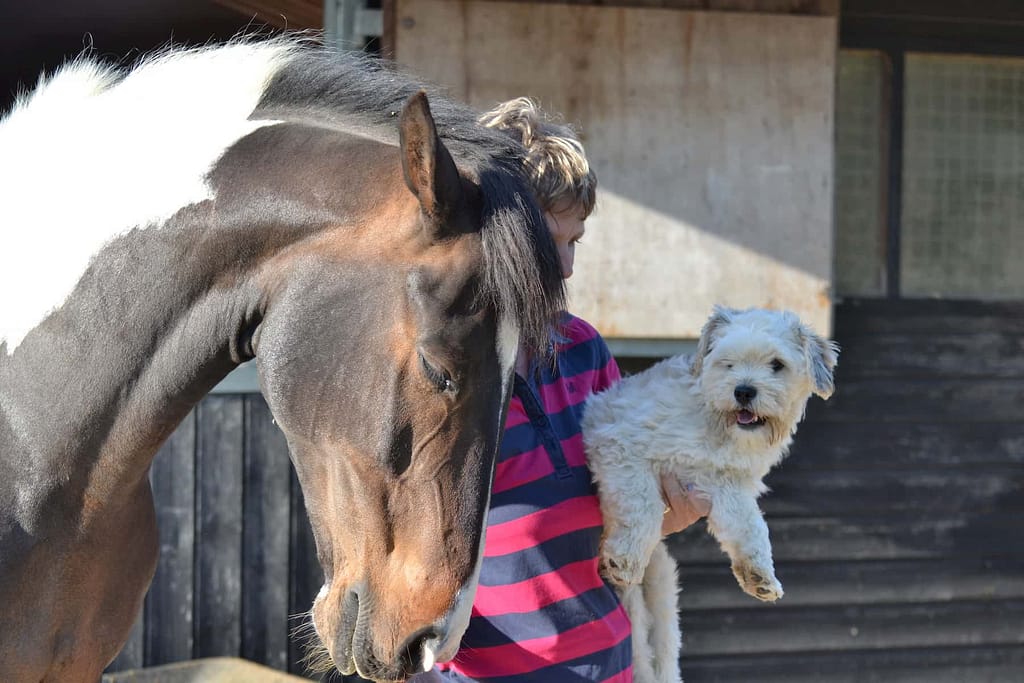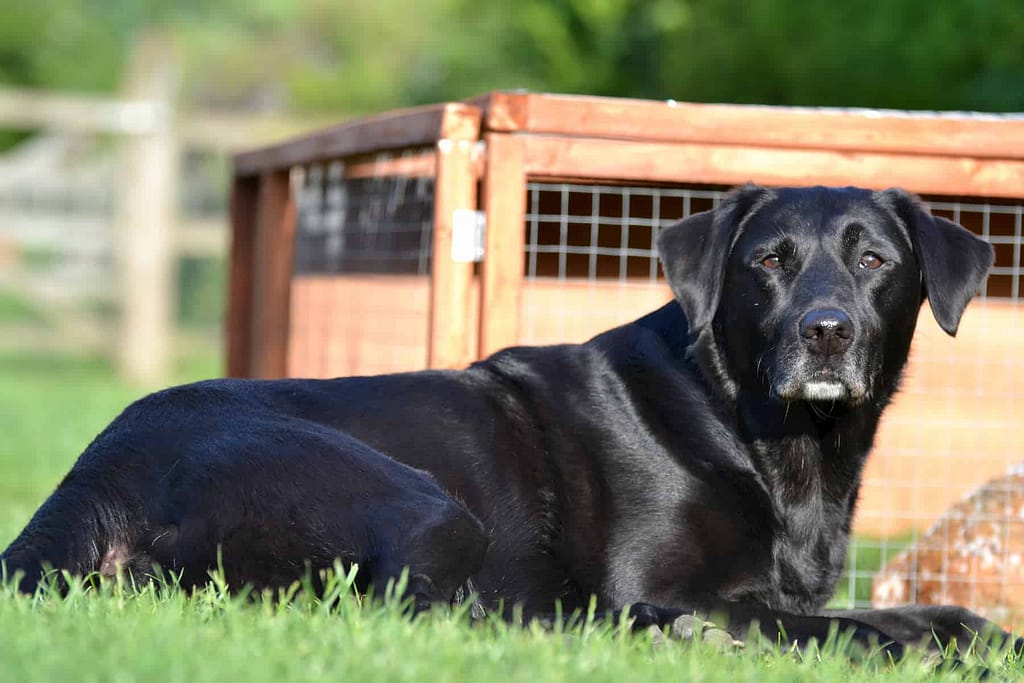Last week I visited a client who owned a house rabbit and who had recently brought a puppy into the home. It got me thinking about how many owners are unsure of how to introduce a new dog to existing pets they may have, or even bring a new pet into a home where a dog is part of the family. This doesn’t have to just be a small, cuddly kind of pet like a cat or guinea pig, but anything from chickens, to horses or even reptiles. Dogs and other animals can happily live together, my three Labradors for example live with a flock of flapping bantam hens, happily sharing their water bowl and even their bed if queen bee Rosie decides she would like to wander into the kitchen and sit there. However, achieving harmony between two different species can require some hard work, a well-structured plan, and of course a lot of patience!


If you are considering adding a dog to a home with other animals, or vice versa, here are my top tips to help ensure that your pets are able to live safely and happily together.
1. Safety first!
Before embarking on an introduction, it is important to first consider the type of pet you would like to introduce your dog or new puppy to. Is it a cat who might ‘flee’ at the site of your dog, promoting a ‘chase’ style game, a guinea pig or chicken who might see your dog as a predator or be easy for your dog to catch and harm, or even a horse that might get spooked and cause a dangerous situation for you/your dog? Whether your other pet is large or small, flighty or steady, you need to consider their needs, behaviour and reactions as well as your dog’s.
You should also consider whether your other pet has any experience of dogs, or even the type of dog you have, and how this might affect their perception and behaviour towards your dog. Just like us humans, dogs and other animals will have their own individual scent and mannerisms, and these might be different to anything your dog or other pet may have encountered before.
Begin by ‘setting up’ the situation. Use a secure pen or cage for smaller animals and use other barriers such as stairgates within your home or fences for larger, outdoor animals. You should also ensure that you have a secure lead and collar for your dog to stop them advancing towards your other pet if necessary. You should also be armed with some tasty treats that your dog enjoys (more on this later in tip 4!).
Remember, a bad experience can have a lasting negative effect – and could even be fatal in some cases! It is best to be well prepared and to not leave anything to chance.

2. Exercise your dog
In order to promote calm behaviour around other animals, it is important that we do not try to introduce our dog to them before we have first drained our dog’s energy. Remember, energy (increased adrenaline) = excitement, and if your dog has lots of energy they will be more likely to react excitably or perhaps with fear or worry. Instead we want to teach our dog to react calmly and thus safely.
Draining your dog’s energy can be achieved a number of ways. For example, you might take your dog on a long walk, jog with your dog, or play ball with them. If your dog is a very young puppy, exploring an unknown area of the garden might have the same tiring effect on them. Choose an activity that suits your dog and their life-stage and, if your dog is older, one that they are familiar with, enthused by, and gets them being active. Once your dog is suitably exercised you can then consider an introduction.

3. Start at distance
Distance is your friend! And will give both your dog and your other pet time and space to work each other out. Remember, much of what we ask of our dogs is making the unnatural (to how they have evolved) natural and, in this case, we must help them and give them time to understand species differences. Similarly, as in tip 1 above, you should ensure that your dog is on a lead and that there is an appropriate barrier between your dog and your other pet. You should allow your dog and other pet to observe and acknowledge each other from a distance where they don’t feel threatened or become overly reactive to each other’s presence.
It is important to also remember that although one of your pets might like to be friends with the other, it might not always be reciprocated. In this respect, animals are just like us humans and this is totally fine. We won’t like everyone we come across in life however, just like we exercise manners, we also want our pets to respect and, as far as possible, understand each other. Take, for example, the elderly sleeping cat who likes to curl up in the sun by the back door. Fido the puppy must understand that he can’t jump all over her and that she wants to sleep, not play. Similarly, an older dog might not want a kitten with sharp claws climbing on their back or might get worried by them running underneath them as they walk. As owners it is important to consider the needs of our pets and, with this in mind, positively teach them how to interact with each other.
Coming back to using distance to help you make your introductions, only when your dog is displaying calm and relaxed behaviour around your other pet should you attempt to move any closer towards them. If your advances make your dog too excitable, don’t be afraid to take a step back and start again. This also goes for the other way around – if, for example, you wanted to introduce your dog to a cat and the cat is clearly spooked then move back to a place where everyone is relaxed and work slowly from this point.

4. Positively reward calm and accepting behaviour
Along with allowing your dog and other pets to slowly work each other out at distance, it is also crucial to build positive associations through the use of positive reward. Upon your dog showing calm and relaxed behaviour towards your other pet you should reward this frame of mind and excellent behaviour with a tasty treat. You might also want to further mark the moment with saying ‘good boy/girl’. You should repeat this as you get closer, only rewarding the behaviour you want your dog to exhibit around your other pet. This will help your dog to understand your expectations of them and learn to behave safely and sensibly when in their presence.

5. Have patience
First impressions are key! If your dog spooks or accidentally hurts your other pet, or vice versa, then it may be much harder to get them back in the same space to work on building a positive relationship between them. Similarly, you do not want your dog to think that chasing another pet in the household is a fun game to play. It might be for them, but it will be incredibly distressing for your other pet. This is why it is so important to set the situation up correctly and safely from the beginning – you can never be too cautious! It is much better to realise that you needn’t have been so worried about your pets interacting and find that they quickly become friends, than to find yourself in a tricky situation that has gone badly and is much more difficult to resolve.
Each situation and pet is different. What might take only days to accept each other for some might take weeks or even months for others. Don’t be tempted to rush the process. Ensuring that only positive steps are taken and positive associations with each other are made will always come up trumps. As they say, slow and steady wins the race.



